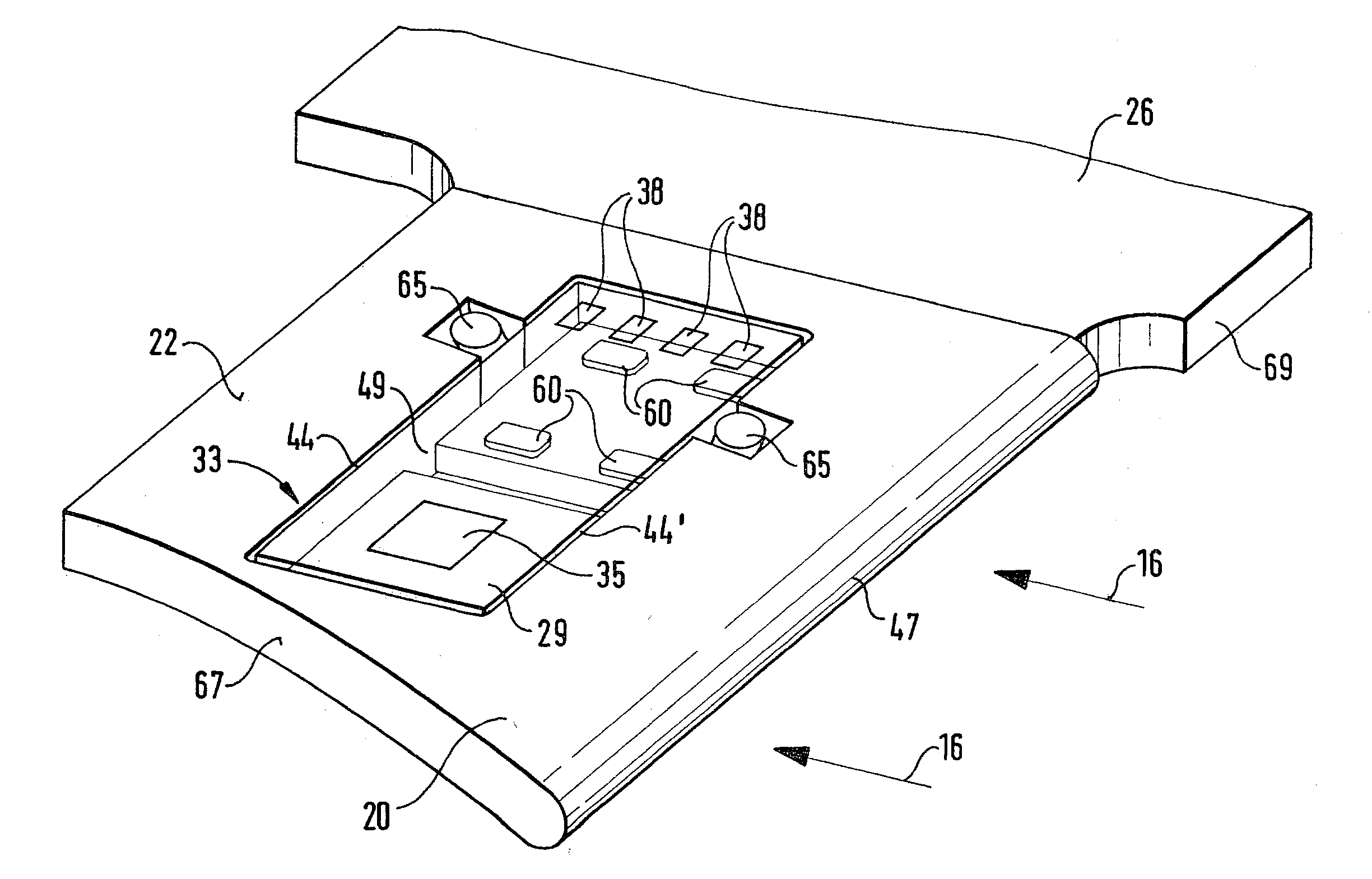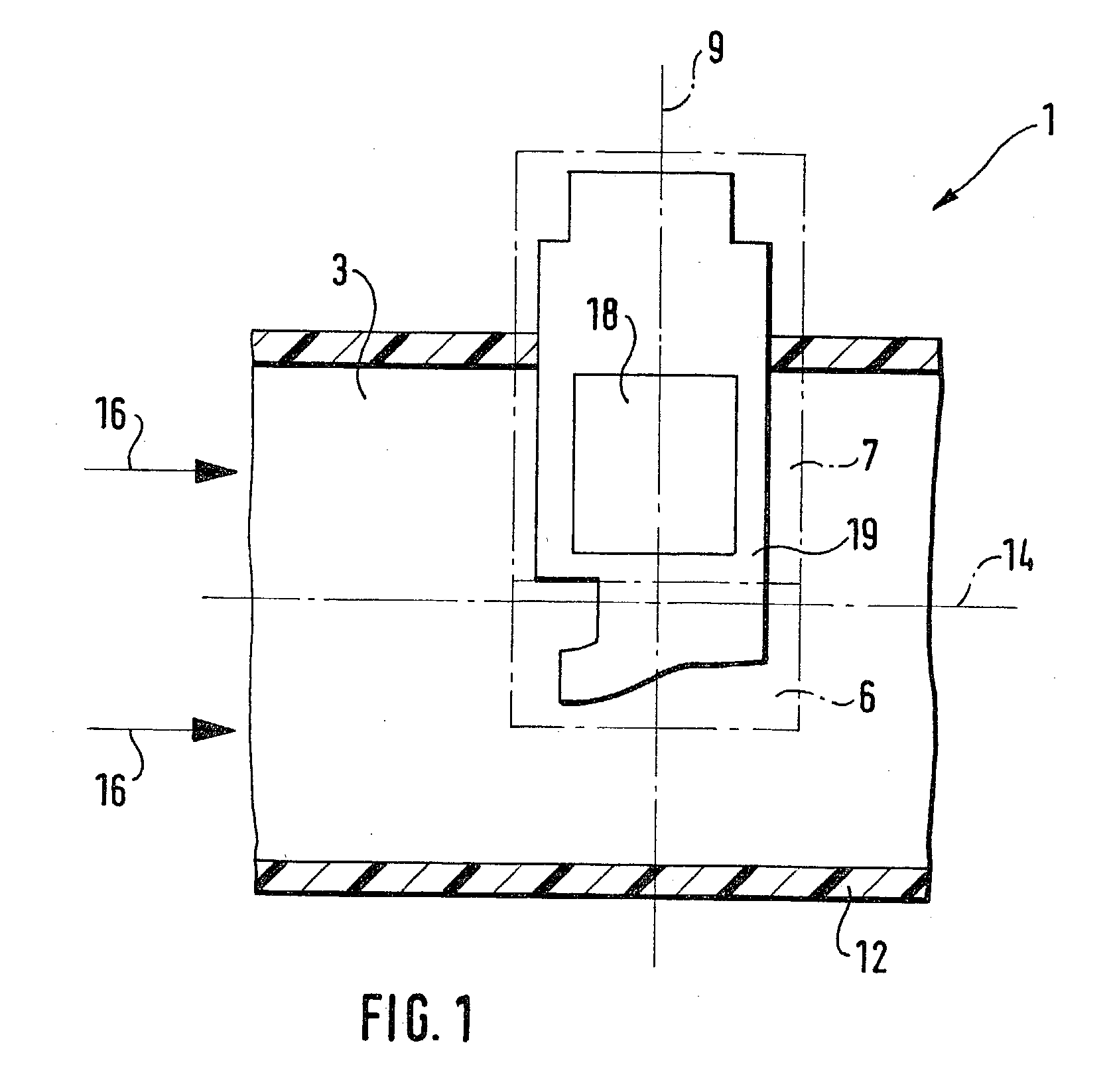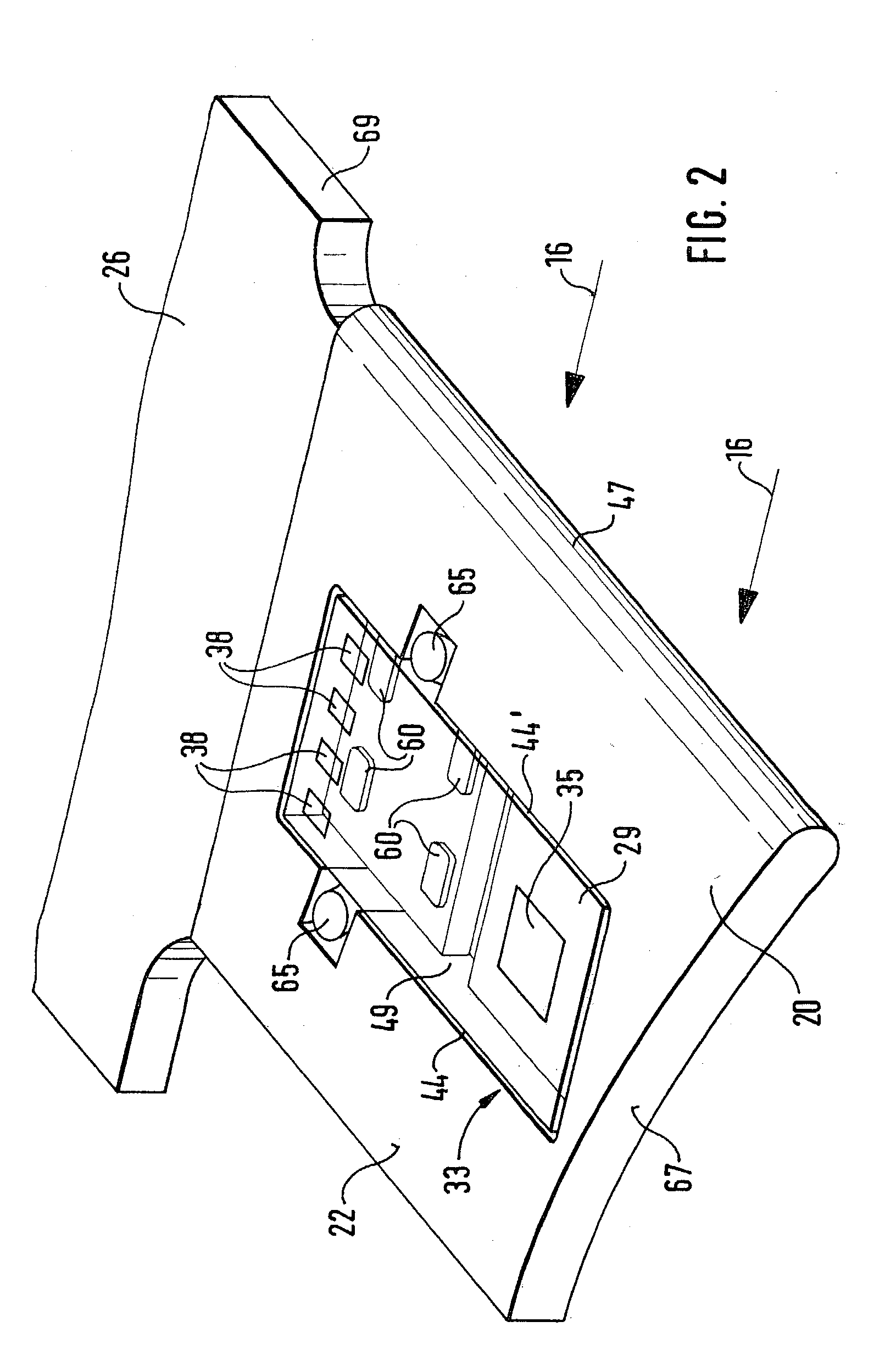Device for determining at least one parameter of a flowing medium
a technology of at least one parameter and a flow medium, applied in liquid/fluent solid measurement, instruments, machines/engines, etc., can solve the problems of invalidating the measurement, high degree of sophistication, heat dissipation of the measuring resistor,
- Summary
- Abstract
- Description
- Claims
- Application Information
AI Technical Summary
Benefits of technology
Problems solved by technology
Method used
Image
Examples
Embodiment Construction
[0030] FIG. 1 shows schematically how a device 1 is installed in a line 3 in which a medium to be measured is flowing. Device 1 is used for determining at least one parameter of the flowing medium and is made of a measuring housing 6, denoted by a lower rectangle indicated by a dot-dash line, and a support part 7, denoted by an upper rectangle indicated by a dot-dash line, in which, for example, an evaluation electronics 18 is accommodated, for instance, on a base support 26 (FIG. 2) in an electronics space 19. Parameters of a flowing medium are, for example, the volumetric air flow for ascertaining an air mass, a temperature, a pressure, a concentration of a component in the medium or a flow velocity, which are determined by suitable sensors. It is possible to use device 1 for determining further parameters. Parameters may be determined using one or more sensors, one sensor also being able to determine two or more parameters. Measuring housing 6 and support part 7 have a common lon...
PUM
 Login to View More
Login to View More Abstract
Description
Claims
Application Information
 Login to View More
Login to View More - R&D
- Intellectual Property
- Life Sciences
- Materials
- Tech Scout
- Unparalleled Data Quality
- Higher Quality Content
- 60% Fewer Hallucinations
Browse by: Latest US Patents, China's latest patents, Technical Efficacy Thesaurus, Application Domain, Technology Topic, Popular Technical Reports.
© 2025 PatSnap. All rights reserved.Legal|Privacy policy|Modern Slavery Act Transparency Statement|Sitemap|About US| Contact US: help@patsnap.com



